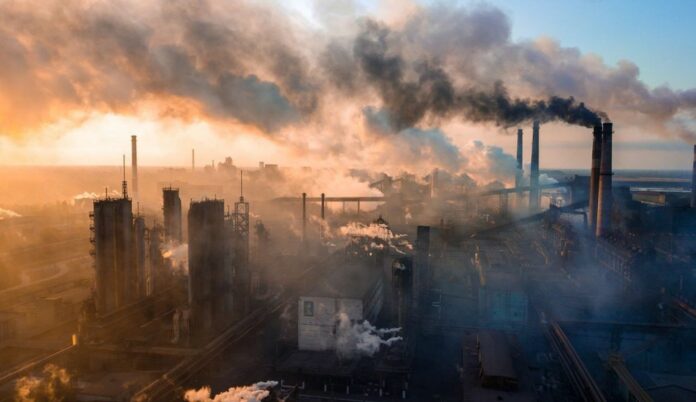
Millions of years of evolution have churned out humans with extraordinary cerebral capacity and dexterity. From stone age flint knapping to modern-day satellite launch, our sophistication of tool-making has only multiplied over the past few millennia. The past 200 years of the industrial revolution have been particularly exceptional, and the list of groundbreaking inventions of the era appears endless.
A lot more has also been happening around us in the same period. Carbon dioxide levels in the atmosphere have increased by 30%. Earth’s average global temperature has risen by almost 1.1 degrees Celcius. We have lost about 1 billion hectares of forests (nearly the size of the United States) in the last 100 years1. According to WWF living planet report 2020, there was an average 68% decrease in population sizes of mammals, birds, amphibians, reptiles, and fish between 1970 and 2016, while the human population has nearly doubled. The natural question therefore is, are we growing at the cost of others?
The answer obviously is a “Yes”, but the more important question is – “how”? A simple textbook answer is that we are not growing sustainably. This assessment is correct but too elementary, and such a superficial understanding has failed to yield any concrete solution to fix the situation. Endless conferences on international sustainable development haven’t produced significant results. Nor can they bring about any change until we have a deeper understanding of our own dynamics with nature.
We must understand that natural processes are stable only because the technologies of nature always operate in cycles. Human technologies, on the other hand, are generally linear. Most of the commodities we manufacture require raw material extracted from nature, which is transformed into something we consume and leave in our surroundings as waste. Most of these wastes are not naturally transformed into original minerals and require industrial recycling. The amount of toxic and hazardous trash we produce daily is growing alarmingly. Some of this waste is recyclable (e.g., Li-ion batteries, silicon chips), while others are not (e.g., single-use plastics). The irony is that most of us are reckless in handling both.
A consequence of our approach is that we are constantly shifting Earth’s physical and material composition away from the equilibrium that can hold life. Let us corroborate this with some publicly available evidence. Scientists can accurately measure Earth’s past atmospheric compositions by studying ancient air bubbles trapped in glaciers. They have successfully recorded the measurements corresponding to last over 400,000 years. It has been found that carbon dioxide levels have primarily stayed between 180 and 280 parts per million (ppm). However, the level has now surpassed over 400 ppm, and this change has happened sharply since 19502.
The leading cause of this change is a rapid increase in the use of fossil fuels and deforestation. Another research way back in 1996 found that we were then accumulating carbon dioxide in our atmosphere due to fossil fuels and deforestation at a tremendous rate of 7 Gigatons of Carbon per year3. Out of this enormous quantity, the oceans absorb a significant portion, making the waters more acidic. Calcium carbonate minerals are the primary building block of skeletons and shells in many species of marine life. Acidification of oceans results in chemical reactions which reduce these minerals in the water, thereby limiting essential nutrients for marine creatures4.
Plastic pollution has become another crisis we have created from our irresponsible behavior as a generation. Plastics essentially are secondary products from the fossil fuel industry. Because of their easy and cheap availability, we have developed a use-and-throw-away culture, making plastic waste management a near impossible task globally. Irresponsible public consumption has led to an equally reckless exponential growth in producing new plastic products. Half of all manufactured plastics have been made in the last 15 years alone, and we expect the total quantity to double again by 20505!
We are currently producing over 450 million tons of plastic every year. Only about 18% of the used plastic gets recycled. Most of it finds its way into landfills and oceans. The amount of accumulated plastic waste in our natural surroundings and landfills is expected to reach 12,000 million tons globally by 2050. Plastic debris in the environment is an ecological disaster for all life forms. Many bird and animal species have also recorded plastic waste in their digestive tracts. Sea birds, such as Procellariiformes, appear prone to mistaking pieces of plastic for food6. Microplastics and nano plastics have found their way into our food chains, thereby entering the bodies of most animals, birds, and even plants7.
These two case studies are just examples of many similar stories. Other wastes, such as chemical and nuclear wastes, are causing equal harm to our ecosystem. United nations-backed report finds that we are driving as many as one million species into extinction, and unfortunately, agriculture which is the source of our life, has become one of the biggest threats to our ecosystem8. Released in 2019, this report assimilated the findings of 15,000 studies and other government reports. Representatives of 132 nations met in Paris to analyze and approve the results. The critical details of their findings are available on the official website of the United Nations. Every reader of this article is strongly advised to read the UN’s report (read here). Some of the most alarming facts presented in this report are as follows:
- One million species are facing the threat of extinction due to human activities.
The numbers can rise further if we don’t act swiftly. - 75% of the terrestrial environment and 66% of marine habitats is severely altered
to date by human actions. - The average abundance of native species in most major land-based habitats has
fallen by at least 20%, mostly since 1900. - More than 40% of amphibian species, almost 33% of reef-forming corals, and
more than a third of all marine mammals are threatened. - The number of invasive alien species per country has risen by about 70% since
1970, across the 21 countries with detailed records.
We seem to secretly hope that our technological advancements will be able to shield us from the negative consequences, and only the other species will perish. The truth is that we are about to get hit very soon with extremely severe consequences. Soil degradation is already causing a rapid decline of micronutrients in our food sources and a looming threat of global famine9. A Dutch study found microplastics in 80% of human blood samples from 22 volunteers10. This is the first discovery of plastic traces in human blood. Bioaccumulation of toxicants in our body and continued exposure to hazardous waste material leads to several ailments. This, combined with micronutrient deficiency, can reduce our capabilities to fight back new infections. Many experts are already blaming humans for Earth’s sixth mass extinction, which is currently underway11. For those unversed, the fifth mass extinction happened about 65 million years ago, wiping out dinosaurs from our planet12.
Fortunately, not all is dark and gloomy. The UN’s report also states that “it is not too late to make a difference, but only if we start now at every level from local to global.” The urgency and magnitude of this crisis have prompted Sadhguru of the Isha foundation to launch the global save soil movement in collaboration with four agencies of the United Nations. As part of this movement, he started a 30,000 km lone motorbike journey from London in the UK to India beginning on March 21. The journey concluded in 100 days.
Sadhguru’s vision behind the movement was to raise public awareness and motivate the majority of the world’s population to stand behind the cause in words and actions. He wants people to raise their voices to their leaders so that soil-friendly policies can quickly be made and implemented across the world. As part of the process, he attended more than 500 public events, met policymakers across 27 nations, and motivated leaders and the electorate to make soil their priority. The journey may have ended, but the campaign is still on. Sadhguru says that the momentum generated in these 100 days can be translated into action on the ground by continuing the efforts for another 12-18 months. He is scheduled to visit 20 nations in the north and south America, the UK, and the Caribbean islands in the coming months. Let us all join him in amplifying the voice. Watch an excerpt of his very challenging but hugely important campaign.





























